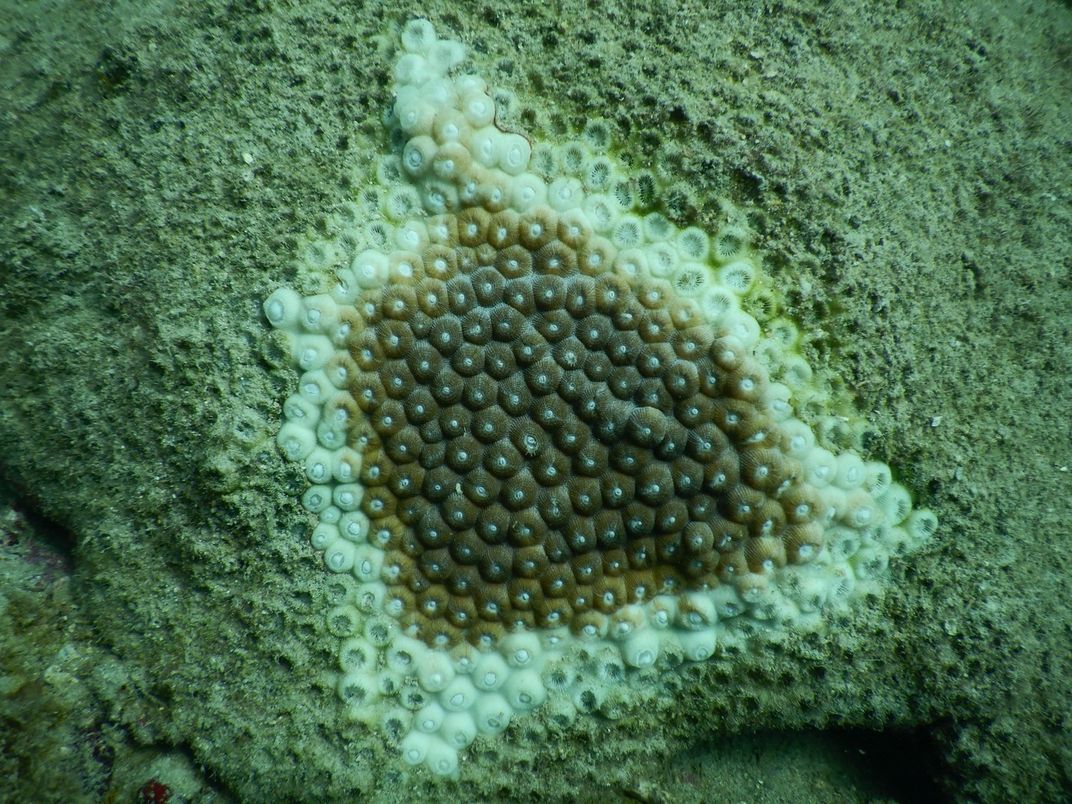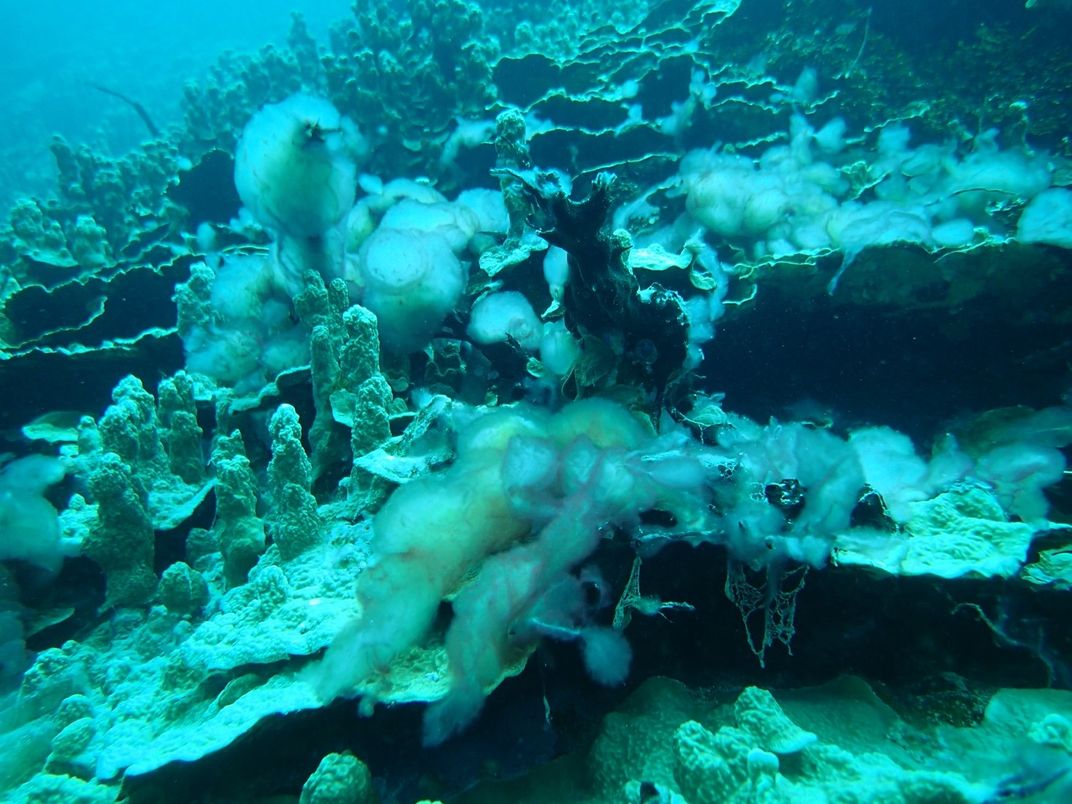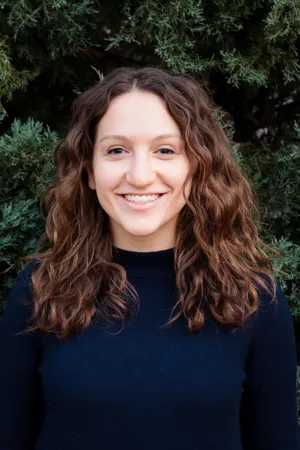NATIONAL MUSEUM OF NATURAL HISTORY
Meet the Marine Scientist Studying How Algae Communicates
Valerie Paul’s work adds to scientists’ knowledge about the ways marine biochemicals can potentially help restore coral reefs and create new biomedicine.
/https://tf-cmsv2-smithsonianmag-media.s3.amazonaws.com/blogging/featured/Diver_swimming_near_a_coral_reef.jpg)
Swimming in the sea is a welcome reprieve from summer’s intense heat. But the ocean is more than a respite from soaring temperatures. It is home to tiny marine organisms, like blue-green algae, that can secrete homemade chemicals to survive.
For “Meet a SI-entist,” Valerie Paul, head scientist at the Smithsonian Marine Station, shares her research on these organisms’ chemical defenses. Her work leading this outpost of the Smithsonian’s National Museum of Natural History is adding to scientists’ knowledge about the ways marine biochemicals can potentially help restore coral reefs and create new biomedicine.
What put you on the path to studying marine chemical ecology?
I went to college at University of California San Diego, and they had a scuba diving club, so I was scuba diving all the time. The diving instructor also taught a marine research course, and we went into the La Jolla Underwater Park and Ecological Reserve to study many different animals. That got me hooked on marine biology.
In the late 1970s, while an undergraduate, I wound up in a research laboratory at the Scripps Institution of Oceanography, which was when people were starting to discover chemical compounds never studied before in marine organisms. It was the beginning of the era of “drugs from the sea.” I became interested in what the compounds’ natural functions were, or why the organisms were producing these chemicals, so I started studying marine chemical ecology. I’ve ended up basing my whole career on that.
Tell me about what you do now as head scientist at Smithsonian Marine Station. How has your research evolved?
For the last 15 years, I’ve been focusing more on marine cyanobacteria, or blue-green algae, which are essentially primitive seaweeds. I focus on the ones that can attach to coral reefs, seagrasses and other organisms.
Some of that research includes examining harmful algal blooms, which cause all kinds of problems. A bloom is an overabundance of one algal species. They’re increasing with climate change, overfishing and pollution. Many blue-green algae species my colleagues and I work on prefer warmer temperatures. So, when it gets very warm in a region, their populations flourish, leading to a bloom that can cause ecosystem upheaval.

Lately, in the last eight years or so, the marine station has also become involved in coral disease. We’ve been working on a particularly bad disease called stony coral tissue loss disease since 2017. To help, we're looking for beneficial bacteria, sometimes called probiotics, that could protect corals from getting the disease and maybe help them if they do get it.
The Smithsonian Marine Station is in coastal Florida. Why is this region intriguing to marine scientists?
We're located on the Indian River Lagoon, which is one of the largest, most biodiverse estuaries in the United States. It spans subtropical regions in the southern part of the Lagoon to almost temperate waterways up in the north.
One good thing about having a field station here is it gives you ready access to specimens and the ability to look at changes over time. Believe it or not, even in a place like this where the Smithsonian has had a 50-year presence, we can go out any day and find new species. There are so many things that are unknown about the marine environment.
Also, thousands of the marine organisms in the National Museum of Natural History’s collections in Washington, D.C. come from Smithsonian researchers who have worked here and collected specimens. For an institution like ours that studies biodiversity and marine biodiversity, it’s just a great location.
How can studying biodiversity at the local level, like in coastal Florida, help scientists learn more about marine ecology at large?
Right now, we're witnessing patterns along the east coast of Florida that are also happening in other parts of the world. For instance, with warming water temperatures and, especially, warming winter temperatures, species like mangroves are moving further north. Green sea turtles are increasingly being seen in the Gulf of Mexico as the water there becomes more temperate. Those local patterns are showing up in Japan where kelp forest habitats are turning into coral reefs ecosystems because of warming. By studying a lot of different locations, we can see these patterns on a global scale.
What are your favorite species or family of species to study and why?

It's one that we helped describe and it’s called Caldora penicillata. It’s this cool, slimy stuff that’s actually kind of pretty when in water. It’s fluffy and frilly and comes in variety of colors. But it’s producing all these toxins. One is a very potent anti-cancer compound that has counterparts being used to treat cancer patients today.
Meet a SI-entist: The Smithsonian is so much more than its world-renowned exhibits and artifacts. It is a hub of scientific exploration for hundreds of researchers from around the world. Once a month, we’ll introduce you to a Smithsonian Institution scientist (or SI-entist) and the fascinating work they do behind the scenes at the National Museum of Natural History.
Related Stories:
DNA Makes Waves in the Fight to Save Coral Reefs
Why Fishes are the Catch of the Day for Climate Research
How the Pandemic Changed Scientific Exploration
Scientists Find Blue-Green Algae Chemical with Cancer Fighting Potential
Together, We Can Save the Mangroves
Can Genetics Improve Fisheries Management?

